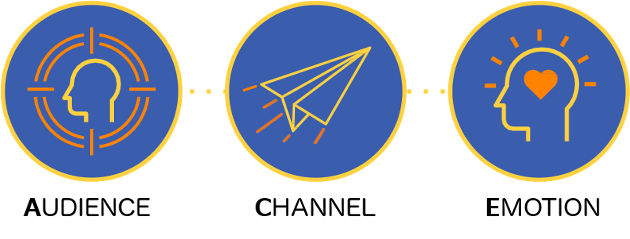Want to know a secret? A lot of business success can be attributed to the unwitting storytellers among us: leaders who passionately narrate their visions to inspire change; account reps who conceptualize products or services through real-life examples; trainers who design engaging, scenario-based learning...
A simple example of the power of story: I was recently cruising along an empty Texas road, singing along to the song on the radio, when the song ended and an announcer said, "Buying a house is exciting, and by 'exciting' I mean 'terrifying.'" Anyone who's traveled the road to home ownership could instantly feel those words—because it is a little terrifying to buy a house. The announcer's narration evoking the buyer's perspective had me tuned in and wanting more.
That's the secret to storytelling success: the ability to convey personalized nuggets up front to gain someone's attention, followed by a well-designed narrative that drives action. A good story makes us feel something, and in business that can be transformative.
Stories that allow us to relate to each other and share common experiences are the most influential because we, the audience, can see ourselves in those stories. And those relatable nuggets can come from anywhere.
For instance, it may seem odd to use Madonna as an example of digital transformation, but that's what McKinsey did in a recent article about business transformation. Stories, especially those based on relatable metaphors and analogies, remove obstacles that block one's ability to grasp complex ideas. Likewise, if your narrative reveals how an idea makes someone's job easier or increases revenue, your recommendation becomes the obvious solution.
Getting Started
Not sure how to get started? A simple formula is to focus on ACE:

- Audience: Who is your desired audience? At the core, storytelling requires a firm understanding of your audience—who they are and why they should care. The key to uncovering more about the audience is directly related to the skill of listening.
- Channel: Where do they navigate for information? Although channel is typically viewed as how you'll deliver a story (e.g. live, YouTube, digital dashboard), it will also guide you to the technology you'll use to design the narrative—and determine resources required to do both.
- Emotion: How will you make them care? Getting your audience to feel something will instantly connect them to your story. That's why storytelling is both an art and a science.
Best-Practices
Once you've identified your ACE, apply these three storytelling best practices to create a compelling story.
1. Make it relatable
Depending on your role within your company, your audience can vary. Are you a leader looking to introduce change? A data analyst tasked with delivering business intelligence to your organization? Or maybe a product marketer looking to connect with your brand's customers? Chances are you already know the target audience. Reveal what will resonate with them.
I identified with the way the radio announcer described the buying process because I've been there. Sure, the advertiser was selling something, but the script led with how it felt to be someone in the throes of acquiring a new home. Approach a story from the audience's perspective, and then watch as they lean in.
For example, a product marketer might create a series of storylines around how consumers would use a product. Think Microsoft's Created on Surface YouTube playlist. It's a collection of real-life stories: Users share examples of how the Surface Pro has enabled faster, smarter, more creative avenues for innovation and business transformation.
2. Design for delivery
Part of the challenge in story design is finding when and how to catch someone's attention. The real-estate ad was designed for radio. It makes sense when you know the best time to catch a potential homebuyer is when they're in the car checking out houses.
Think critically about where and when your message will be heard. When stories are relevant and delivered at the right time through optimal channels, you can almost hear the audience saying, "Thank you for recognizing the way I navigate my day-to-day."
For instance, take those mandatory annual reports. Whereas the SEC might be interested in mountains of data, would the general public? Warby Parker's 2013 annual report is a perfect example of designing for delivery with an audience in mind. It's interactive and visually stimulating, and it promotes the brand's story.
3. Help others overcome obstacles
Everyone in your audience is secretly thinking, "What's in it for me?" It's why we storytellers focus on the emotion of a story. If an audience can feel the need, pain, or problem, they'll understand the story's purpose.
Crafting a story tailored to an audience accomplishes two things: First, it answers the question "Why should I care?" Second, it removes complexity. For example, after reading an article on augmented reality (AR) in the workplace, I wanted to understand how it fit into my world, so I asked a peer for input. Rather than rattling off complicated, technical jargon, he glanced over at my messy desk and explained that I could replace all that clutter with a pair of goggles and a controller. Now that's a compelling explanation!
Whether you're trying to communicate a complex idea, teach someone a new skill, or drive brand awareness, sharing stories an audience can relate to will capture that audience's imagination and help them grasp the power of your message.
* * *
When you share a story, you'll often get one in return. Stories beget new stories. When a story is memorable, it endures.
To learn more about becoming a memorable business storyteller, download Data Storytelling Confidential—7 Secrets for Storytelling Newbies.




